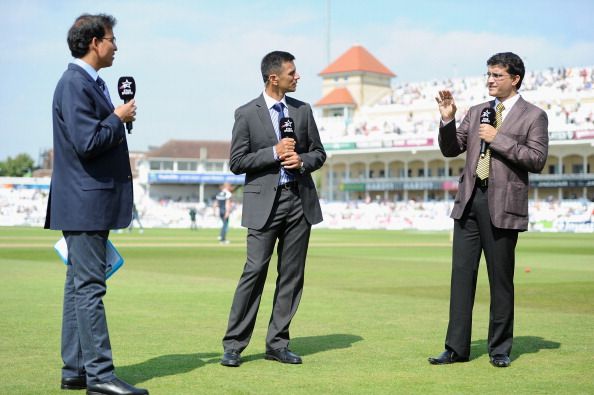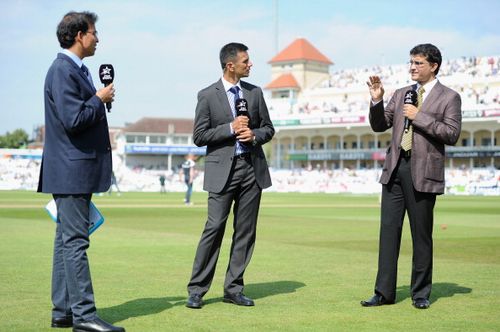
Sourav Ganguly and Rahul Dravid: Redefining the scope of Indian commentary

The precursor
The Indian cricket commentary contingent was for long defined by one word: hyperbole.
Overblown and over-the-top clichés were the norm, while metaphors and similes ventured into topics that instead needed to be addressed factually with relevant examples. Not that anyone was complaining voraciously about it, but there were few times when one felt the paucity of commentators not placing more emphasis on their cricketing relevancy as much as they were trying to show-off their English speaking skills.
The paltry handful who weren’t prone to these commentating indulgences were not only far and few in between but, as the years progressed, had started giving in to these trends, as well. It was disconcerting to see these kinds of changes erode what was theoretically supposed to be an enjoyable discussion to listen to.
The start of the new era
It wasn’t until Sourav Ganguly and Rahul Dravid arrived on the commentary scene that one got to realise the lack of depth in the Indian commentary contingent.
Granted, we had commentators capable of thoroughly silencing other guys in the commentary room, but, more often than not, these silences were the result of bemusement as if indicating that making peace and keeping silent was better than continue to exchange meaningless banter and then be overpowered completely.
Ganguly and Dravid brought about a change in the way Indian commentators articulated their opinions aloud. Exaggerated phrases and tautological observations were omitted as were unnecessary drawing of comparisons. Like their reputation in their cricketing time, Ganguly and Dravid have now forged a reputation for themselves in the commentary box for being direct about the proceedings taking place below.
Unique commentating techniques
Commentary is one of those vocations that don’t come with a teaching manual or a rule-book. There isn’t any right or wrong way to do it, and, as such, one finds that the benchmarks are flexible, susceptible to the slightest variations; that is what creates frustration following those commentating gents who all of a sudden seem to follow upon a different track than continue on their set precedents. .
In case of Ganguly and Dravid, what is different is that they aren’t hesitant to carry on a good-natured banter with their fellow commentators about their playing heydays. However, during the match, they don’t digress from talking about match conditions and the players involved in the game in the present than raking up the past.
The contrast of styles between the two flamboyant players is obvious in the commentary box, too, which makes listening to them far more occupying, more so when the match starts to drawl.
Lessons to be learnt
There have been a few instances recently where some of the Indian commentators have faced the scorn of the cricket fans. To such commentators, the simplicity with which Ganguly and Dravid present their opinions should come as a handy practical tool. There isn’t any need to delve that far into the start of their respective commentating careers to cite examples; their entire repertoire – including their funnier backchats with each other in the ongoing England-India Test series – is noteworthy to take illustrations from.
Part of the commentating successes enjoyed by both erstwhile captains is due to their understanding of when to keep quiet, instead of monopolising the conversations entirely. Likewise is their objectivity and lack of bias towards or against teams and players. Most of the other Indian commentators somehow have failed to grasp these aspects of commentating, which means that, when the Indian team is playing, one gets an uninterrupted monologue on how good the Indians are or how good they were, or even how good they could be under the so-called right circumstances.
The biggest lesson that these two men can give to the obviously more experienced commentators is to simply listen. Listening gives perspective while allowing time to retrospect and put across opinions with profundity, for commentators need to be better representatives of the uniquely integral institution and not individuals who act as unofficial mouthpieces to defend or oppose players, teams and tactics.